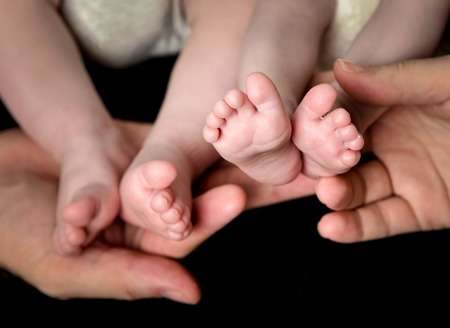Multiple Births

In this article, you will find:
Carrying multiples
Twin pregnancies occur naturally in around 1 in 53 women, but some factors increase the chance of you conceiving twins or more, including the use of some fertility treatments, becoming pregnant when you're older, already having children, and having a family history of twins.
Because multiple pregnancies are high risk, you'll receive extra monitoring; the type of delivery depends on the position of your twins and other complications. A concern is whether twins will be born prematurely with a small birth weight, which can mean spending time in a neonatal intensive care unit (see Neonatal intensive care unit).
Toward the end of pregnancy, you may have extra scans to monitor the babies' growth, since the ability of the placenta to provide oxygen can be reduced in a twin pregnancy. The volume of the fluid around each baby and their heart rates may be measured to check their well-being.
Certain complications with the babies or the mother can influence the delivery and mean that a cesarean is planned.
Fetal complications
Twin-to-twin transfusion syndrome (TTTS) is a condition unique to identical twins who share a placenta (see How twins are conceived). It occurs if there is a direct link in the blood supply between the babies and can put the lives of both at risk. Babies with TTTS need specialized treatment that may involve reducing the fluid around one baby or using a laser to separate the circulations.
Rarely, twins can develop in the same sac, known as monoamniotic twins. The main risk of this condition is that the cords become tangled, affecting the oxygen supply. The twins may have heart traces at the end of pregnancy and are delivered early by cesarean.
Maternal complications
When you're carrying twins, you're at a higher risk of complications, such as preeclampsia, possibly because of the additional strain on the kidneys; the liver condition cholestasis, for reasons that are unclear; and thrombosis, because there is an additional strain on your circulation. These conditions may also mean that an early cesarean is recommended.
You're more likely to go into labor early and your babies may be lighter than average. With twins, you're likely to go into labor around 37 weeks; with triplets around 33 weeks; and with quadruplets around 30 weeks. The average birthweight for twins is 5.5 lb (2.5 kg); triplets and quadruplets are almost always low-birthweight.
